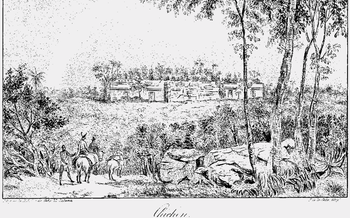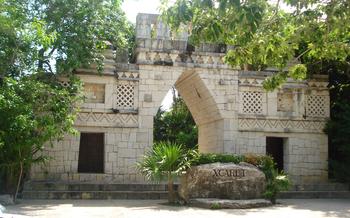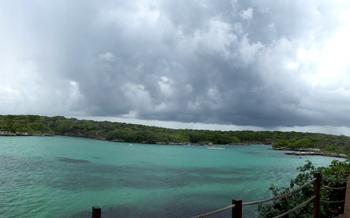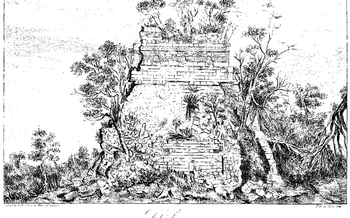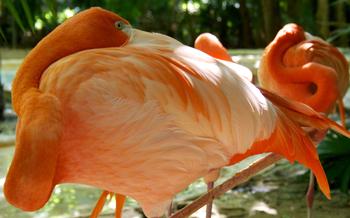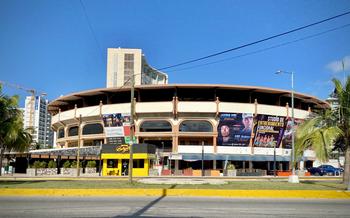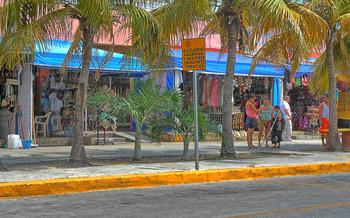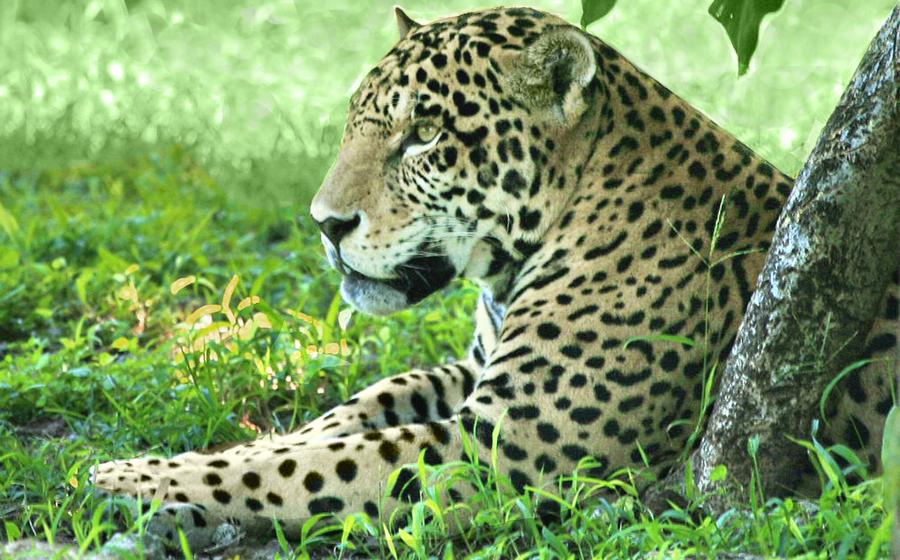
Cenote Manatí (Casa Cenote)
- The Ancient Significance of Cenote Manatí
- Geographical Location and Accessibility
- Natural Features and Beauty
- Activities and Experiences
- Flora and Fauna
- Cultural Significance
- Safety and Regulations
- Amenities and Facilities
- Budget Tips
- Packing Essentials
- Photo Opportunities
- Nearby Attractions
- Ethical Considerations
The Ancient Significance of Cenote Manatí
The ancient Mayans revered Cenote Manatí as a sacred place, believing it to be a portal to the underworld and a source of life and fertility. They performed rituals and ceremonies at the cenote, seeking guidance and protection from their deities. The cenote's crystal-clear waters were considered to have healing properties, and people would bathe in them to purify themselves and cure illnesses. Offerings were made to the gods, often in the form of precious jewels or pottery, which were thrown into the cenote as a symbol of devotion and gratitude.
Over time, the cenote's significance evolved, and it became a gathering place for the Mayans to socialize, trade, and celebrate important events. It served as a natural meeting point for people from different Mayan communities, fostering a sense of unity and cultural exchange. The cenote's beauty and tranquility also attracted visitors from afar, who came to witness its natural wonders and experience its spiritual aura.
Geographical Location and Accessibility
The Cenote Manatí, also known as Casa Cenote, is a natural wonder located within the Xcaret Park, a renowned eco-archaeological park on the Riviera Maya in Mexico. To reach the cenote, visitors can take a short walk from the park's main entrance or hop on a tram that makes regular stops throughout the park.
For those driving from Cancun, the journey takes approximately 45 minutes via Highway 30Ample parking is available within the Xcaret Park, ensuring a hassle-free arrival. Alternatively, visitors can opt for a guided tour from Cancun or nearby cities like Playa del Carmen, which typically includes transportation to and from the park.
Once inside the park, visitors will find a well-marked path leading to the cenote. The admission fee to Xcaret Park grants access to the Cenote Manatí and a wide range of other attractions, including cultural performances, wildlife encounters, and thrilling rides. Additional fees may apply for specific activities such as snorkeling or diving.
Natural Features and Beauty
The Cenote Manatí is a natural wonder that boasts unique geological formations, crystal-clear waters, and an abundance of marine life. Its captivating beauty attracts visitors from around the world. The cenote's unique geological formations, shaped by the erosion of limestone over millions of years, create an awe-inspiring landscape. Stalactites and stalagmites adorn the cenote's walls, forming intricate patterns that create a surreal and enchanting atmosphere.
The crystal-clear waters of the cenote offer unparalleled visibility, allowing visitors to marvel at the diverse marine life that inhabits its depths. Schools of colorful fish, including parrotfish, angelfish, and damselfish, dart through the water, creating a vibrant underwater spectacle. Visitors may also encounter gentle sea turtles gracefully gliding through the cenote's waters, adding to the magical experience.
The lush vegetation surrounding the cenote further enhances its natural beauty. Tropical plants, including ferns, orchids, and bromeliads, thrive in the cenote's humid environment, creating a verdant backdrop that contrasts beautifully with the turquoise waters. The interplay of light and shadow as the sun filters through the vegetation creates a picturesque setting that is sure to leave visitors breathless.
Activities and Experiences
The cenote offers an array of water-based activities that cater to adventurers and nature enthusiasts alike. Snorkeling and diving are popular options that allow visitors to immerse themselves in the crystal-clear waters and marvel at the vibrant marine life. A myriad of colorful fish, sea turtles, and other aquatic creatures await discovery within the depths of the cenote.
For those seeking a more leisurely experience, kayaking and paddle boarding are excellent ways to explore the cenote's tranquil waters. Visitors can glide along the surface, taking in the stunning scenery and enjoying the tranquility of the surroundings. Guided tours are also available for those who want to learn more about the cenote's history, geology, and ecology.
To enhance the experience, visitors can rent snorkeling gear, kayaks, paddle boards, and other equipment on-site. Whether you're a seasoned diver or a first-time snorkeler, the cenote offers an unforgettable experience for all levels of adventurers.
Flora and Fauna
The Cenote Manatí is a haven of biodiversity, providing a habitat for a diverse range of plant and animal species. The crystal-clear waters are home to a variety of fish, including the Mayan cichlid, guppy, and molly. The cenote is also home to several species of turtles, including the green sea turtle, loggerhead sea turtle, and hawksbill sea turtle. These gentle creatures glide gracefully through the water, offering visitors a glimpse into their underwater world.
The lush vegetation surrounding the cenote is equally impressive. The cenote is surrounded by a lush jungle, home to a variety of tropical plants and trees. The air is filled with the sounds of birdsong, as parrots, toucans, and other tropical birds flit through the trees. The cenote is a vital habitat for these animals, providing them with food, water, and shelter.
The Cenote Manatí is also home to several endangered species, including the jaguar, ocelot, and margay. These elusive cats can sometimes be spotted in the jungle surrounding the cenote. The cenote is also home to a variety of reptiles, including snakes, lizards, and iguanas. These creatures play an important role in the ecosystem of the cenote, helping to control the population of rodents and insects.
The Cenote Manatí is a unique and fragile ecosystem that is home to a diverse range of plant and animal species. It is important to protect this cenote and its inhabitants by respecting the environment and following the rules and regulations of the park.
Cultural Significance
The Cenote Manatí holds immense cultural significance, deeply intertwined with the history and beliefs of the ancient Mayan civilization. For the Mayans, cenotes were considered sacred portals to the underworld, known as Xibalba. They believed that these natural wonders served as a bridge between the physical and spiritual realms, allowing for communication with deities and ancestors. The Mayans performed various rituals and ceremonies at the cenote, seeking guidance, protection, and healing. Offerings of precious objects, such as jade, pottery, and gold, were made to appease the gods and ensure a harmonious relationship between the human and divine worlds. The cenote's cultural significance extends beyond the Mayan era, as it continues to be revered by modern-day indigenous communities who recognize its spiritual and ecological importance.
Safety and Regulations
The safety of visitors to the Cenote Manatí is of utmost importance. The cenote is equipped with lifeguards who are trained to respond to emergencies and ensure the well-being of swimmers. Clearly marked signs and guidelines are displayed throughout the area to inform visitors about the safety measures and regulations in place. Swimming is permitted only within designated areas, and life jackets are provided for those who need them. Snorkeling and diving are allowed under the supervision of certified guides to ensure the safety of participants and minimize any potential risks. Visitors are advised to respect the natural environment and wildlife, avoiding any activities that may disturb or harm the delicate ecosystem of the cenote. By adhering to the safety regulations and guidelines, visitors can enjoy their experience at the Cenote Manatí safely and responsibly.
Amenities and Facilities
The cenote is well-equipped with various amenities and facilities to ensure a comfortable and enjoyable experience for visitors. Changing rooms, showers, and lockers are available for visitors to freshen up before and after their swim. Restrooms are conveniently located within the vicinity of the cenote, ensuring easy access for visitors. For those who need to refuel, there are restaurants and shops nearby where they can purchase food, drinks, and souvenirs. Additionally, the cenote is wheelchair accessible, making it easy for visitors with disabilities to access and explore the natural wonder. Guided tours are available in multiple languages, providing visitors with an informative and immersive experience. These tours offer insights into the cenote's history, geology, and ecosystem, making the visit even more enriching.
Budget Tips
Visiting the Cenote Manatí doesn't have to break the bank. Here are some tips for budget-conscious travelers:
-
Take advantage of discounts: Students, seniors, and families can often get discounts on admission fees. Be sure to ask about these discounts when you purchase your tickets.
-
Bring your own snorkeling gear: If you have your own snorkeling gear, bring it with you to save on rental costs. You can also rent snorkeling gear at the cenote, but it will cost extra.
-
Pack your own food and drinks: There are several restaurants and snack bars near the cenote, but they can be expensive. Save money by packing your own food and drinks.
-
Visit during the off-season: The cenote is busiest during the peak tourist season, which runs from December to April. If you visit during the shoulder season (May to November), you'll likely find lower prices on admission fees and accommodations.
Packing Essentials
Before embarking on your adventure at Cenote Manatí, it's crucial to pack the essentials to ensure a comfortable and enjoyable experience. The foundation of your packing list lies in appropriate swimwear that allows you to move freely and revel in the refreshing waters of the cenote. Slip-resistant footwear, such as water shoes or sandals, is highly recommended to navigate the rocky terrain and slippery surfaces around the cenote.
Sun protection is paramount to safeguard your skin from the intense Mexican sun. Pack a high-SPF sunscreen, preferably water-resistant, to maintain its effectiveness while you swim and explore. A wide-brimmed hat and sunglasses offer additional protection for your face and eyes.
To keep your belongings dry and organized, a waterproof bag or backpack is a must-have. Consider bringing a change of clothes, including a dry set of swimwear, to ensure you're comfortable after your aquatic adventures. A towel is essential for drying off after your swim and enjoying the warm Mexican sunshine.
For those who want to capture the underwater beauty of the cenote, a waterproof camera or GoPro is a fantastic tool. These devices allow you to document your snorkeling or diving experiences, capturing the vibrant marine life and stunning underwater landscapes. Ensure your camera is fully charged and has ample storage space to capture all your precious memories.
Photo Opportunities
The Casa Cenote offers a multitude of breathtaking photo opportunities for capturing the beauty of this natural wonder. With its crystal-clear waters, lush vegetation, and unique geological formations, every corner of the cenote is a potential postcard.
For the best lighting conditions, aim to visit the cenote during the early morning or late afternoon hours, when the sun's rays create a magical glow that illuminates the cenote's depths. This is the ideal time to capture the vibrant colors of the water and the surrounding vegetation.
To capture the cenote's grandeur, head to the observation deck, which offers panoramic views of the entire area. From this vantage point, you can capture stunning shots of the cenote's crystal-clear waters, the lush jungle canopy, and the surrounding limestone cliffs.
For a unique perspective, take advantage of the underwater photo opportunities. Snorkeling or diving in the cenote allows you to get up close and personal with the diverse marine life, including colorful fish, turtles, and rays. Whether you use a waterproof camera or a GoPro, the cenote's crystal-clear waters provide excellent visibility for capturing stunning underwater shots.
For those looking for a truly special experience, consider booking a professional photography session at the cenote. Local photographers are experts at capturing the cenote's beauty and can guide you to the best spots for unforgettable shots. Whether you're a solo traveler, a couple, or a family, a professional photoshoot is a great way to commemorate your visit to this incredible place.
Nearby Attractions
Xcaret Park is an eco-archaeological park that offers a wide range of activities to its visitors. In addition to the Cenote Manatí, the park features a variety of other attractions, including:
- Xcaret Aquarium: A world-class aquarium featuring over 5,000 species of marine life from the Caribbean Sea and the Yucatan Peninsula.
- Xcaret Bird Aviary: A massive aviary housing over 1,500 birds from over 100 different species, including parrots, macaws, and toucans.
- Xcaret Butterfly Pavilion: A beautiful butterfly garden home to over 50 species of butterflies, including the Blue Morpho and the Monarch Butterfly.
- Xcaret Coral Reef Aquarium: A unique aquarium showcasing the diverse coral reefs of the Mexican Caribbean, with over 500 species of fish and invertebrates.
- Xcaret Mayan Village: A recreation of a traditional Mayan village, featuring traditional Mayan homes, a ceremonial center, and a ball court.
- Xcaret Museum of Mexican Folk Art: A museum dedicated to the rich folk art traditions of Mexico, featuring exhibits on textiles, pottery, and woodcarving.
- Xcaret Theater: A state-of-the-art theater that hosts a variety of shows and performances, including the Xcaret Mexico Espectacular, a spectacular show that celebrates the history and culture of Mexico.
Visitors to the Cenote Manatí can easily combine their visit with other activities at Xcaret Park, making for a fun and educational day exploring the natural and cultural wonders of the Yucatan Peninsula.
Ethical Considerations
As you explore the cenote and the surrounding area, it is essential to be mindful of your impact on the local environment and culture. Here are a few tips for ethical and sustainable travel:
-
Respect Local Customs and Traditions: Remember that the cenote holds deep cultural significance for the Mayan people. Be respectful of their traditions and customs, and avoid any actions that may be considered offensive or disrespectful.
-
Minimize Your Environmental Footprint: Make an effort to minimize your environmental impact by reducing waste, using eco-friendly products, and conserving water and energy. Dispose of trash properly, avoid single-use plastics, and choose biodegradable sunscreen to protect the delicate ecosystem.
-
Support Sustainable Tourism: Choose tour operators that prioritize conservation and give back to the local community. Look for tour companies that support local conservation efforts, such as reforestation projects or marine conservation initiatives. By supporting sustainable tourism, you can help ensure the long-term preservation of the cenote and its surrounding environment.

